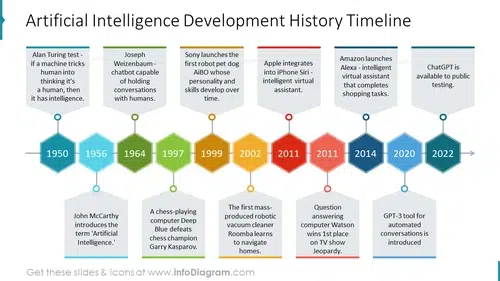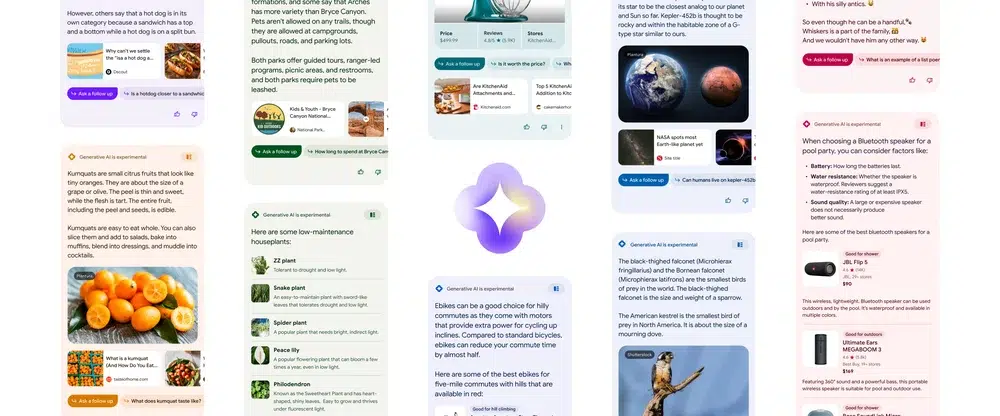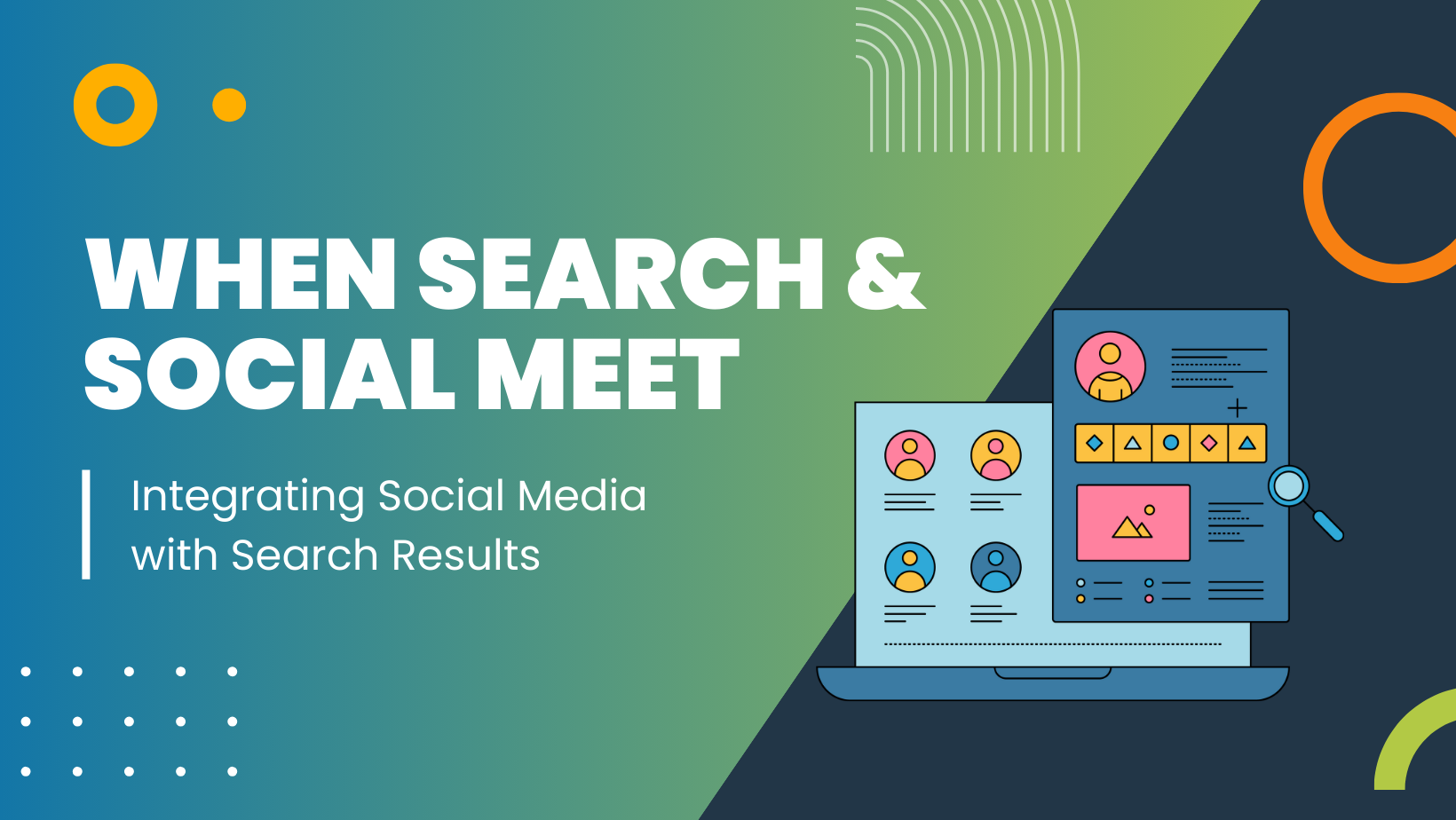An Introductory Guide to Generative AI & Marketing

By Deborah Garry, Founder & CEO
There has been tremendous media coverage and hype around AI lately – and for good reason. Although Artificial Intelligence has been around with us since the 1950’s, AI has seen a resurgence in growth and interest driven by today’s computers’ computational power, speed, and ability to harness the vast amounts of information and data now available.
To best leverage Generative AI as a marketing tool, it’s important to understand its potential and its limitations. Recently, I spoke about the intersection of Generative AI and Marketing at a global business conference. I’ll share the highlights and best practices below.

What IS Generative AI?
Gen AI is a type of artificial intelligence technology that can produce various types of content, including text, imagery, audio and synthetic data.
It has been trained on large amounts of data from the internet – allowing it to generate content on various topics. However, it can only do what it was programmed to do. Its accuracy depends upon the data it is drawing from, and the guidance it is given.
As the old computing maxim says, “Garbage In . . . Garbage Out”.
A Quick Look at Generative AI Products
- ChatGPT:
- Built on the OpenAI platform powered by Nvidia's GPUs
- Answers questions and commands with detailed responses based on the data it contains
- Best for ideation and short content generation
- Jasper:
- Creates “on brand AI content”
- Use it as a tool for longer content like blogs
- Generates content from information provided by the user
- It has a limited library of data
- Users can shape content by providing direction for tone, voice, keywords, and more
- Users can highlight a specific section, provide directions for updates, rewrites, and improvements. Human insight, strategy, editing and expertise are required!
Some helpful tools:
- Blank Document
- New Campaign
- Content Summarizer
- Templates
- LinkedIn Posts
- Press Releases
- Meta Descriptions
- Ads
- Social, and more
- Bard:
- A conversational AI tool by Google
- Tome:
- A new medium for shaping and sharing ideas
- Doodly:
- "Is the first and only doodle video creation software to allow anyone to create realistic doodle videos in minutes"
- Google’s Demand Gen:
- Integrates your best-performing video and image assets across Google’s most visual, entertainment-focused touchpoints — YouTube, Discover and Gmail.
- Anthropic’s Claude
- Helps with summarization, search, creative and collaborative writing, Q&A, coding, and more.
- Synthesia
- Turns text into video with avatars and AI generated speech.
- Adobe Generative AI
- Helps optimize how content is produced and scaled across customer touch points.
- Adobe Firefly
- Uses simple prompts in over 100 languages to create Images, transform text, play with color, and more.
The video on the right was created in Adobe Premiere using the Generative AI tool that has been integrated across all Adobe products.
- Google’s Search Generative Experience (SGE):
- Redefines search with generative AI
- Launched in May, it has received a mixed reception
- New capabilities were announced in June, focused on travel and shopping
- Allows users to chat with Google using natural language and receive answers to their queries without typing keywords or phrases
- Now, if you ask questions about a place in Google Search, you’ll see a snapshot that brings together information from across the web as well as reviews, photos and business profile details submitted by business owners.
- Or, if someone is shopping for a product, SGE will show product descriptions, ratings, reviews, prices, images, and recommendations.
Quick Tip
SGE does not create content. It finds and curates it. You Create the Content! Develop thoughtful brand content based on Sound Marketing Strategy.

How do we use it?
Like every other new marketing tool, Generative AI has to be assessed and utilized properly for best ROI. How will it help you work smarter or faster? Will it create revenue? Ask yourself how it will best integrate with your marketing strategy and processes, by evaluating the components below.
Assess AI’s Potential
- Enhance Marketing ROI
- Help analyze data to better understand customer behavior and preferences
- Align with Marketing Strategy
- Can help uncover patterns and trends to drive more tailored strategy
- Help generate topic ideas for content marketing
- Fit into the Customer Journey
- Conduct SEO keyword research
- Gain insight into customer touch points
- Create content structure around your customer’s journey
- Enhance the Customer Experience
- Enable personalized recommendations and communication, targeted advertising, and interactive experiences to improve CX
- What may need updating to make best use of the Tool?
- Workflows
- Processes & Policies
- Technology
- Testing Mechanisms
Recognize AI’s Limitations
- Lack of Transparency:
- AI is not able to replicate ethics and morality.
- Marketing expertise and human insight are needed to build on raw AI content – which can and will absolutely be influenced and flavored by existing data and content.
- Accuracy & Bias:
- The data or content provided is not always 100% factual or up-to-date, and may be biased, fabricated, or even completely inaccurate.
- As a recent example, a lawyer cited legal cases in his court argument that did not actually exist – and now faces a court hearing of his own.
- Mediocrity vs Authenticity:
- Beware artificial and generic sounding and looking content and imagery
- Intellectual Property & Copyright
- There are currently no verifiable data governance and protection assurances regarding confidential information
- Assume that any data or queries you enter will become public information
- Cybersecurity & Fraud:
- Prepare for malicious use of generative AI
- Ensure mitigating controls are put in place
10 Best Practices for Best Results
- Clearly define your Marketing Goals
- Identify and use relevant and collected data to train the generative AI
- customer demographics, purchasing behavior, social media and website analytics, . . .
- customer interactions, market trends, and historical marketing campaigns
- Optimize Generated Marketing Content
- analyze engagement, click-through rates, and conversion rates
- Don’t input any personally identifiable information
- Don’t input any sensitive information
- Don’t input any company IP
- Do turn off history if using external tools (like ChatGPT) that allow that choice
- Do closely monitor content and verify output, which are subject to subtle but meaningful fabrications, factual errors and/or may be biased or inappropriate statements.
- Know your industry, review content, and validate information before publishing!
- Test!
- Build a Company AI Policy. (See our blog here)
There is no question we are entering a period of great change and potential. To stay at the forefront, marketers must remain nimble, ready to learn, and adept at leveraging their expertise and experience to best utilize new Generative AI technology.
It’s a helpful tool – and evolving rapidly. Test, learn, and train your team to use it wisely.




